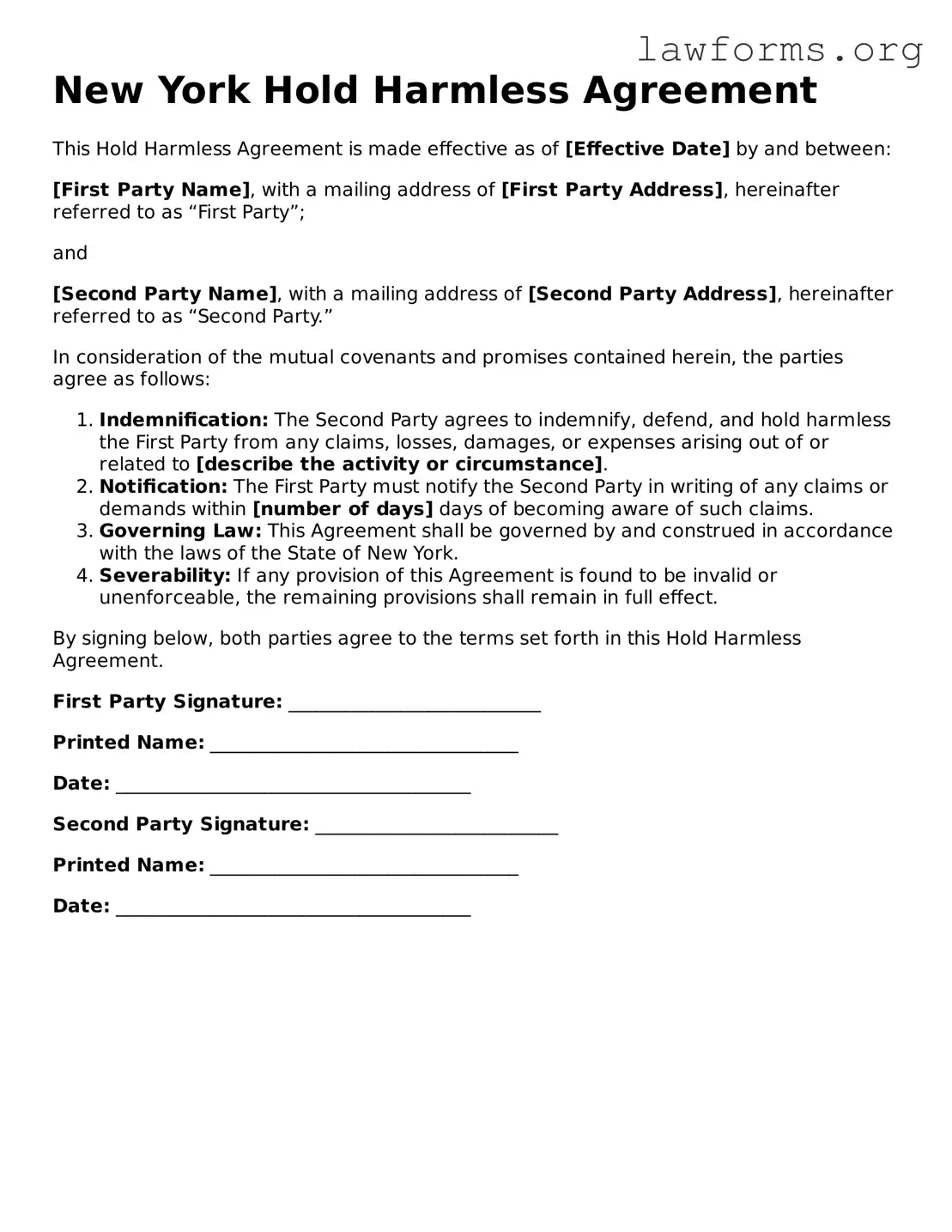New York Hold Harmless Agreement
This Hold Harmless Agreement is made effective as of [Effective Date] by and between:
[First Party Name], with a mailing address of [First Party Address], hereinafter referred to as “First Party”;
and
[Second Party Name], with a mailing address of [Second Party Address], hereinafter referred to as “Second Party.”
In consideration of the mutual covenants and promises contained herein, the parties agree as follows:
- Indemnification: The Second Party agrees to indemnify, defend, and hold harmless the First Party from any claims, losses, damages, or expenses arising out of or related to [describe the activity or circumstance].
- Notification: The First Party must notify the Second Party in writing of any claims or demands within [number of days] days of becoming aware of such claims.
- Governing Law: This Agreement shall be governed by and construed in accordance with the laws of the State of New York.
- Severability: If any provision of this Agreement is found to be invalid or unenforceable, the remaining provisions shall remain in full effect.
By signing below, both parties agree to the terms set forth in this Hold Harmless Agreement.
First Party Signature: ___________________________
Printed Name: _________________________________
Date: ______________________________________
Second Party Signature: __________________________
Printed Name: _________________________________
Date: ______________________________________
